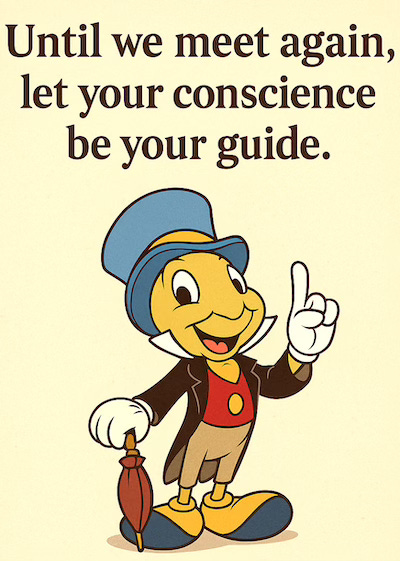There are moments, often late at night, when silence stops feeling peaceful and turns heavy. Thoughts wander toward worries, regrets, and imagined futures until anxiety quietly joins you. Yet anxiety might not mean something is wrong. It can be a signal, pointing toward what you need to see.
Buddhism teaches that anxiety arises from two mental forces: attachment and aversion. Attachment clings to comfort, certainty, and familiar people or routines. When change comes, fear follows—“Don’t take this from me.” Aversion resists pain, loss, illness, and aging. We push away what we dislike, hoping resistance will keep it away.
But as the Buddha said, “Whatever is subject to arising is subject to ceasing.” Everything changes—body, emotions, relationships. Anxiety grows when we deny this truth.
Tom, a retired Navy veteran, walked the same trail each morning until a hip injury stopped him. His anxiety soared because he was clinging to “the version of me that could still move freely.” He learned that suffering comes not from change itself but from refusing to let go. The Dhammapada teaches: “From attachment springs grief, from attachment springs fear. But he who is free from attachment knows neither grief nor fear.”
Anxiety begins with a single thought—“Something’s wrong” or “What if this never gets better?” Soon, you are living inside that thought. The Buddha’s reminder—“This too is just a thought”—offers freedom.
Not all thoughts are true. Many are old fears or habits of worry. A thought is only a passing cloud across awareness. Marlene, a 76-year-old widow, feared falling, forgetting, or losing control. Through mindfulness she learned: “This thought is not me.” The fear loosened.
In Buddhism, this is non-identification. You are not your thoughts; they move through you. The task is not to silence them but to see them clearly: “Ah, I see you, thought. You’re trying to protect me, but you are not reality.” The shift from being inside the thought to observing it changes everything.
When daily routines quiet down, the mind drifts into “what-ifs.” Mindfulness anchors you back to the only real moment—the present. It’s not about clearing the mind but paying close attention to breath, sensations, and surroundings.
The Buddha taught: “Do not dwell in the past, do not dream of the future, concentrate the mind on the present moment.” Anxiety lives in the future; peace lives here and now.
Frank, a retired carpenter, felt lost after his wife’s death. Sitting in meditation, he followed his breath. At first, thoughts roared. Gradually he noticed breathing, birds, warmth in his hands. Each breath became an anchor. Mindfulness didn’t erase his sorrow, but it allowed him to face it without panic. He saw he was not the storm but the sky holding it.
Anxiety often comes with a harsh inner voice: “Why are you like this? You should be stronger.” Many older people learned to hide feelings and stay stoic, caring for others while neglecting themselves. When space finally opens, all the suppressed pain returns.
Buddhism’s remedy is compassion—especially for oneself. “You yourself, as much as anybody in the universe, deserve your love and affection.”
Ruth, a 79-year-old retired nurse, was always “the strong one.” After retirement and loss, anxiety overwhelmed her. At a retreat she placed a hand on her heart and repeated, “May I be kind to myself. May I accept myself as I am.” It felt impossible at first, but soon she felt the tightness ease. Her teacher told her, “Self-compassion isn’t ego; it’s softening.” From then on, she practiced gentleness instead of judgment.
Compassion is medicine for the heart. Take it often, especially when pain arises.
Sometimes anxiety feels like identity—fast heartbeat, racing mind, sleepless nights. But 2,500 years ago the Buddha taught the idea of non-self: “This is not mine. This is not me. This is not who I am.”
This phrase isn’t denial but release. We are not the sensations or emotions that pass through us. Like the sky and the storm, we hold anxiety but are not defined by it.
Walter, 82, described anxiety as “a gnawing in the chest.” Through meditation he repeated the phrase and felt a small loosening. When fear returned, he greeted it gently—“Ah, here it is again”—then remembered, “This is not who I am.” Slowly, his calm grew.
The Buddha didn’t promise freedom from storms, only steadiness within them. The thought “This is not me” reminds you that anxiety is transient. Say it when silence feels heavy or worry tightens your chest. Speak it with gentleness. It is not a weapon but a balm.
Anxiety becomes a teacher, not an enemy. It shows where you cling, where you resist, and where you still need to soften. Each anxious moment is an invitation to return to peace.
Ask yourself: What if I stop clinging to what no longer serves me? What if I listen to what brings me home? Breathe deeply. Walk gently. Remember: who you are has never been broken.
Anxiety is not a flaw or failure. It is a signal calling you back—to presence, to compassion, to your original wholeness.__ _



I discovered Zen Mind, Beginner's Mind by Shunryu Suzuki at a second-hand book store when I was 15. I loved it. But probably more on a romantic, aesthetic level: I couldn't meditate to save myself, and at that age -- and beyond -- more hedonistic and ego-driven pursuits prevailed.
I got back to it many years later though. Actually decades. The interesting thing about music, whether playing or listening to it, is although it can be this very self-expressive, cathartic, healing activity, it can also be a bit like drugs: avoidant, escapist, dissociative. What meditation can do, and especially the solitude and silence that comes with it, is return you to everything that's hidden and suppressed.
I've been reading Zen and the Brain recently by James Austin. He's both a neurologist and a meditator. It's a dense, hefty book, but fascinating. It's interesting to see how neurology correlates with different states of consciousness.
Thanks for this, Bret. Excellent advice. Perhaps Dan Quayle was right when he said, “The mind is a terrible thing.”